Looking for an authentic walking holiday in Sardinia? Mark Nicholls shares a day-by-day overview of his hike through the area’s historic sites and rugged trails. Plus, discover how to book your own slow travel break, and what you need to know before you do.
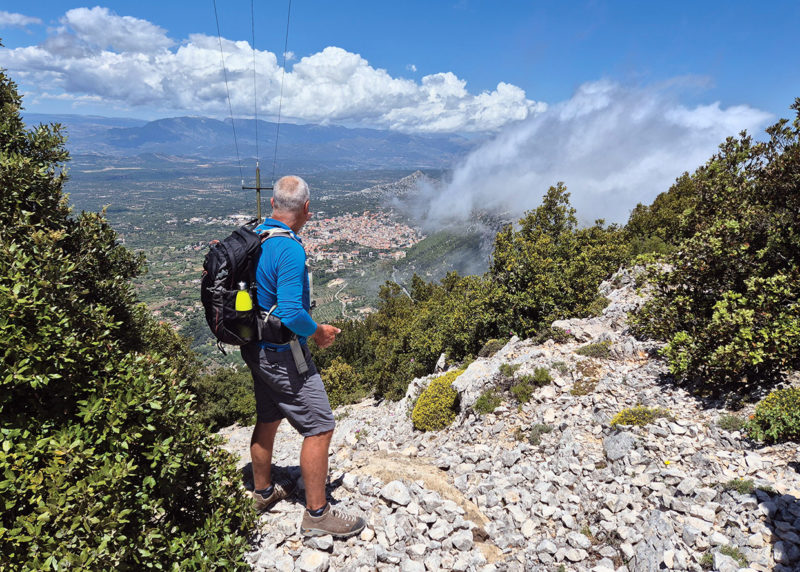
Sardinia feels like a world apart, an island where rugged natural beauty and ancient history converge. While its famous coastlines draw a crowd, Exodus Adventure Travels invites you on a different kind of journey: a walking holiday in Sardinia, dedicated to slow travel and authentic, off-the-beaten-path discovery.
Beyond the beaches, you’ll find a landscape shaped by hiking trails that lead through dramatic canyons and to the forgotten Nuragic villages of a mysterious civilisation.
Join Mark Nicholls as he shares his experience on a week-long adventure travel trip in eastern Sardinia. Below, you’ll find an overview of everything you need to know about this Sardinia walking tour, followed by a day-by-day blog to give you a true feel for the adventure.
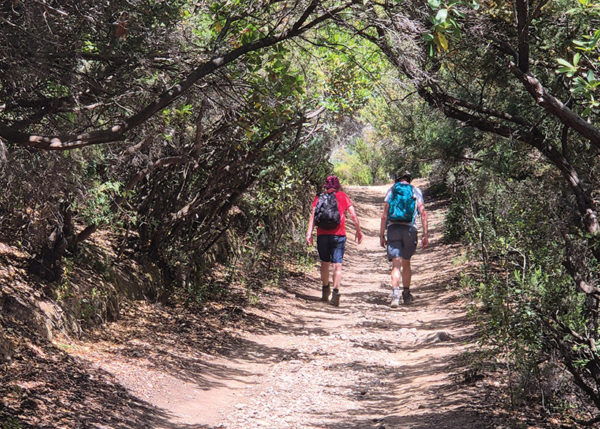
Walking in Sardinia with Exodus Adventure Travels
The full eight-day Walking in Sardinia break is provided by outdoor adventure company Exodus Adventure Travels. The trip includes four days centred around walking, one day of sightseeing at a more gentle pace, and one free day to do as you please.
You’ll usually be in a group of 5-16 people, with a minimum age of 16. An Exodus Adventure Travels leader accompanies the group on all walks and activities.
This eastern Sardinia walking holiday is priced from £1,999 per person, including flights, accommodation, most meals, transfers and activities.
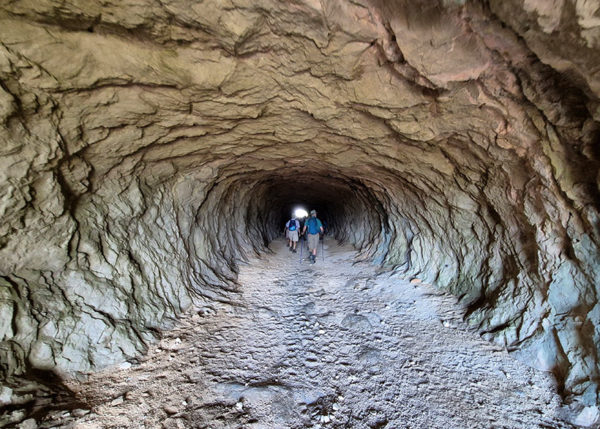
Walking level
Graded as a moderate (level 3) walking week with free time to relax and enjoy the local food and wine.
Main walks take 5-6 hours on a variety of dirt tracks, gravel and paved routes. Be aware that, at times, paths are overgrown and rough underfoot, with steep ascents and descents.
What to take
Take good walking footwear (ideally boots), water bottles, a hat, sun cream, and plenty of energy.
You may also benefit from taking walking poles, bug repellent, an umbrella, and swimwear.
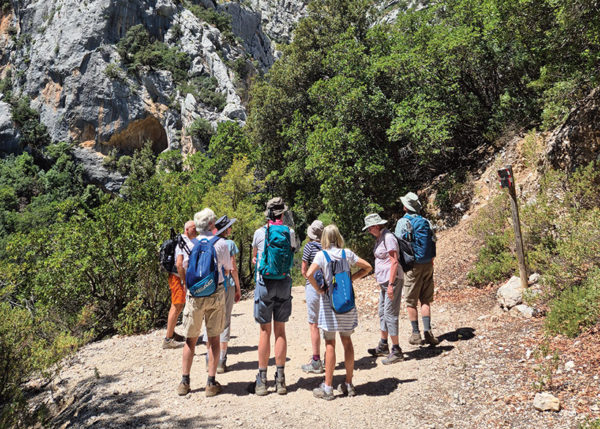
Accommodation: 7 nights
The base for the duration of the trip is the family-run Hotel Il Querceto on the edge of Dorgali. The hotel is bright and spacious, championing local artists with paintings and crafted furniture on display throughout. It’s conveniently located a 15-minute walk from the town centre’s shops, restaurants, cafés and bars.
The hotel boasts 39 comfortable rooms, a restaurant serving traditional Sardinian food, an indoor pool, courtyards and terraces. And it’s worth noting that those terraces offer magnificent views of the hillsides and mountains, all the way across to Nuoro in the far distance.
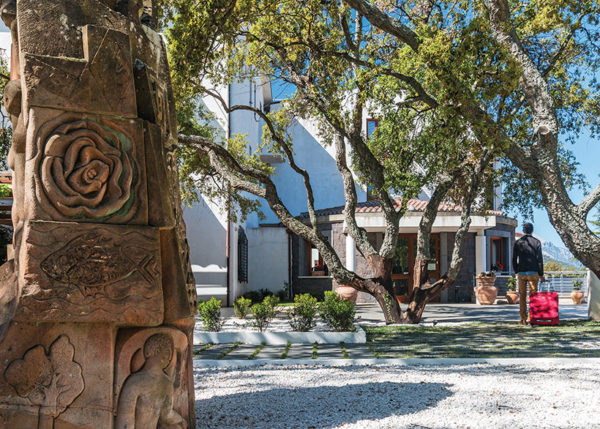
The manager, Massi Troncia, has worked in a number of UK hotels and is president of the regional hospitality association of 200 hotels. His restaurant at Il Querceto offers meat/fish and vegetarian options for dinner, with everything cooked fresh on the day. Dishes include ravioli, suckling pig, squid, octopus, and mussels, and look out for a delicious vegetarian lasagne.
Meals
This walking holiday in Sardinia includes breakfast each day of the trip.
Lunch and dinner are included on all full days of the trip, except the ‘free day’, where you are free to discover the local cuisine at your leisure. Dinner is also included on your arrival day.
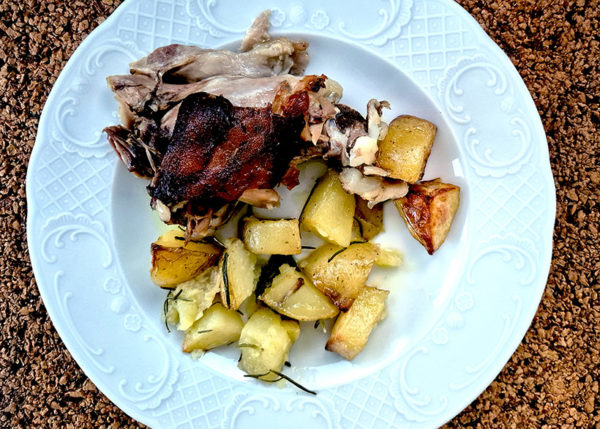
Getting there
Nearest airport: Olbia (OLB).
Transfer time: 70 minutes from Olbia airport to the hotel in Dorgali.
Ancient Sardinian walking tour: day-by-day blog
Day 1: Arrival
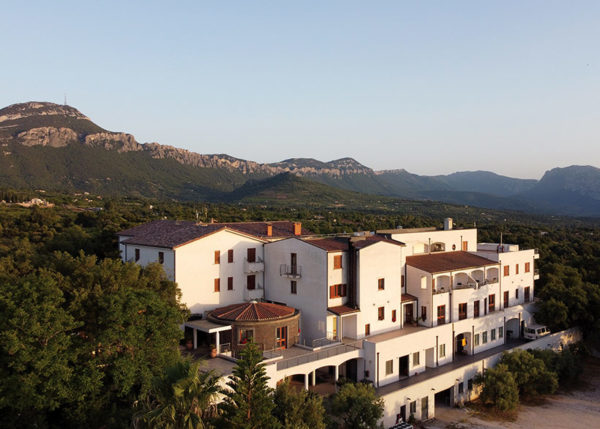
The pathways are very rugged, often quite challenging underfoot, as they lead up into the mountains. Despite the paucity of rain, the landscape remains verdant. Trees and vineyards thrive, bushes bloom pastel pink with oleander, and wild flowers add a sheen of colour along the way. This is beautiful, rocky, eastern Sardinia.
Sitting on tectonic plates that have shifted over millennia to create a mesmerising terrain, both above and below ground. It is this edge of the island that I set out to explore during a week of walks with outdoor specialists Exodus Adventure Travels.
Our base is Dorgali, a town of 8,000 inhabitants just about in sight of the regional capital of Nuoro in the distance. Between here and there lies the limestone landscape formed by (now-dormant) volcanic activity and earthquakes. Amongst it lie clues to the existence of the mysterious Nuragic people who once lived here.
Little written record exists of their presence from 1800 BC to the second century AD. But their tombs, restored villages, and hideaways remain among the mountains, woods and undulating ridges. For my own part, having settled into the Hotel Il Querceto on the first evening, my exploration of the east of Sardinia was about to begin.
Day 2: To the summit of Monte Tului
An ideal start to the week’s walking, the route gives an overall impression and orientation of the area with 360-degree vistas of the mountains and the coastline.
Distance: 15 km | Walking time: 5 hours
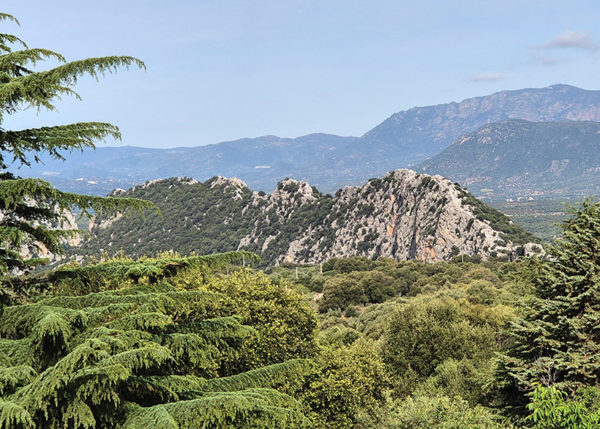
Described by our Exodus guide, Tony Sarda, as an ‘acclimatisation walk’, this was a taster of the terrain that lay ahead in the following days. From the town, we could clearly see the summit of our destination, Monte Tului, at 903 metres above sea level.
Having wandered through Dorgali’s alleys and courtyards before picking up the footpath, within half an hour we had reached Galaria Etza, a 115 metre-long tunnel carved into the limestone hillside. Started in 1838, it forged a shortcut to transport goods from the port at Cala Gonone, saving traders a 40-kilometre detour.
Once through the tunnel, the path falls away in one direction to the coast and rises in the other towards the summit of Tului, zig-zagging upwards and offering magnificent views over the turquoise waters of the Gulf of Orosei.
At the top, we ate packed lunches while taking in the inland views across Dorgali, the dragon back shape of the mountains, and the monolithic Tiscali, which we tackled later in the week. The return was via a gelateria, a just reward after a five-hour walk, before dinner at the hotel.
Day 3: Gorropu Gorge
The undulating path leads gradually to the grandeur of the canyon, where we really feel our insignificance beside the soaring walls at the gorge’s narrower points.
Distance 15 km | Walking time: 6 hours
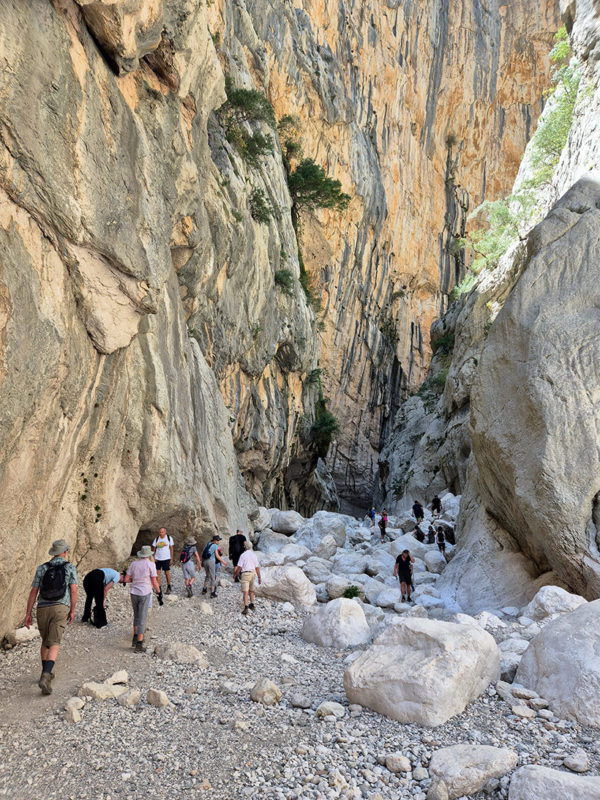
There was a buzz of excitement at the prospect of tackling the deepest natural canyon in Italy. But first, a 30-minute minibus ride to the entry point and an undulating four-mile walk to the Gorropu Gorge entrance.
With views of the dried-out bed of the Flumineddu River below and shrieks of nesting falcons above, the trail was more rugged than the route up to Mount Tului. It ended with rocky steps with rope holds down into the canyon. But it was worth the effort; the sheer walls of the gorge rose 650 feet as we clambered over boulders and squeezed through narrow apertures.
The gorge has three graded stages. Green, the most accessible route, leads 400 metres to the narrowest point, a few metres across. For those who seek a further challenge, the yellow sector is trickier as the rocks become shiny and slippery. Finally, the red sector requires specialist equipment and expertise.
We paused to eat our packed lunches on the riverbed, then we retraced our route to the starting point, where cold drinks and coffee awaited. While the distance was similar to day one, the walk was more difficult. The terrain required respect and concentration, though the flowering oleander of June added splashes of colour as the rock contrasted with clear blue skies. Dinner was pizza and wine at Pizzeria L’Angolo Blu in the town.
Day 4: Serra Orrios & Grotta di Ispinigoli
A relaxing day of culture offering an insight into the lost civilisation of the Nuragic people, a beach break and the Grotta di Ispinigoli, which is simply magnificent.
Sightseeing day | Minimal walking required

Culture, history, archaeology, and geology – and a chance to sample the local wine – were on today’s agenda.
As the pace eased, the life and times of the Nuragic people came into focus with a stop at the Giants’ Tomb, a megalithic grave site of their chieftains. Little is known about them, but a visit to the restored village of Serra Orrios offered some clues about how they lived. Here, we saw ceremonial buildings, round stone huts and square structures that housed animals.
Soon afterwards, we were on the beach for barbecued chicken and a ciabatta at a shoreline café. This was followed by a swim before we headed to one of the highlights of the week: the Grotta di Ispinigoli.
One of the great wonders of the region, it actually lies 50 metres below ground. However, it’s truly worth the descent into Grotta di Ispinigoli, with its amazing stalagmites and stalactites. The centrepiece and star attraction of the cavern is a striking column of calcified limestone that connects the cave’s ceiling to its floor.
Our cave guide, Julia Fancello, explained that all but one metre of the structure is a stalagmite. It rises from the ground until it meets the stalactite, which grows much more slowly from the cave ceiling.
“The 38 metre column is the tallest in Europe,” added Julia. “It took between half a million and three million years to grow, or 20 to 100 years for each cubic centimetre.”
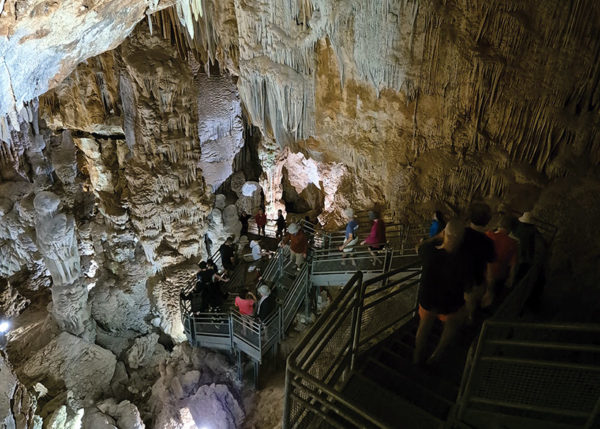
The cavern descends a further 60 metres beyond and then for another 18 kilometres into the hillside, but is only accessible to speleologists.
These limestone mountains were created 180 million years ago by volcanic eruptions and earthquakes and slow drips of water. All around, the imagination runs wild with subtle lighting creating shadows and highlighting features and formations within.
Back in Dorgali, corks popped at Cantina Dorgali, as wine from the local farmers’ co-operative was enthusiastically sampled. (I was particularly taken by the sparkling Rose e Luna.)
Day 5: Free day (spent on another walk)
Take your time today. Relax in Dorgali, or head down to Cala Gonone and enjoy the sand, sea and sunshine in the resort.
A non-walking day (unless, like Mark, you choose otherwise!)

As a day away from the programme, there were three options. Either roam around Dorgali and enjoy the town’s cafés and restaurants, get on board the local bus to Nuoro, or head out on an optional walk.
I chose the latter and joined some of the group that cut through Galaria Etza and descended into the resort of Cala Gonone. It’s quiet, with lovely beaches and fish restaurants for lunch after a dip in the sea. It also offers the chance to sit in a bar or enjoy ice cream at a gelateria and watch the world go by, before catching the service bus back to Dorgali.
Day 6: The ascent of Tiscali
The climb up Tiscali to the lost village of the Nuragi is the most challenging walk of the week. The location has an odd eeriness to it, but there is a great sense of achievement to be had in making it all the way to the hidden village.
Distance: 12 km | Walking time: 5 hours
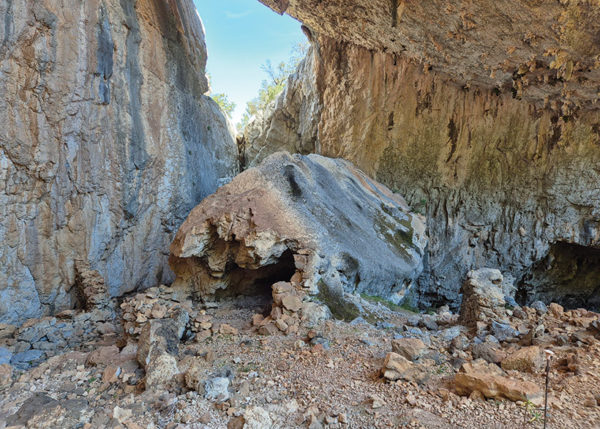
After the relaxation of the previous two days, the most challenging, yet exhilarating, walk lay ahead. It was time for the hike up to Tiscali. Peaking at 420 metres above sea level, the route is rocky, at times quite exposed. It zig-zags through river beds and up the mountainside to the place where the Nuragic people hid from the occupying Roman legions.
The mercury was nudging 30 degrees as we set off, with the route to Tiscali changing from broad pathways to narrow ledges and rough-hewn steps before the shady respite of a forested area. The final rugged route to the summit revealed the secret within: the remnants of stone dwellings. Inside were walls blackened with soot from fires and streaked with magnesium.
As the Romans expanded into Sardinia in 238 BC (and stayed for 700 years), the Nuragi hid, fleeing up the mountain to a secret village. The heavily armoured Romans seemingly never discovered the hideaway, which offers uninterrupted views down the valley for early warnings of an approaching enemy.
Our descent followed the Cedrino river bed before a mini-bus ride to Su Gologone, where rushing water exiting the gorge has sculpted the vast karst spring.
Day 7: Boat in, walk out of Cala Luna
Taking the first boat to Cala Luna means we’re on the beach before it gets busier. The walk is only three-and-a-half miles to Cala Falui but feels like six because of the terrain, where you need your full faculties and a good sense of balance.
Distance: 10km | Walking time: 5 hours

We board the 9 am boat from Cala Gonone to Cala Luna, passing shoreline caves on the way. After, there are a couple of hours to settle on the sandy beach, explore the caves and swim before tackling the walk up the steep and narrow path to Cala Falui.
At times shaded beneath trees, parts of the path were also exposed to the sun as we negotiated rocky steps using handholds, ropes and branches.
Descending to Cala Falui to eat our packed lunch on the pebble beach, we then climbed the steps to follow the coast road back to Cala Gonone. Here, we grabbed a drink and took the service bus back to Dorgali. Dinner at Il Querceto was a traditional Sardinian treat of meats and cheeses, followed by the delicious local delicacy of suckling pig.
Day 8: The walking holiday in Sardinia comes to an end
The trip ends after a final breakfast at the Hotel Il Querceto. Exodus Adventure Travels offers a group departure to the airport, but it’s also possible to arrange your own transfer to suit your chosen flight time.
Find out more about this trip on the Exodus Adventure Travels website.
Looking for more travel inspiration? Read about this sailing holiday in Sardinia
Words by Mark Nicholls
